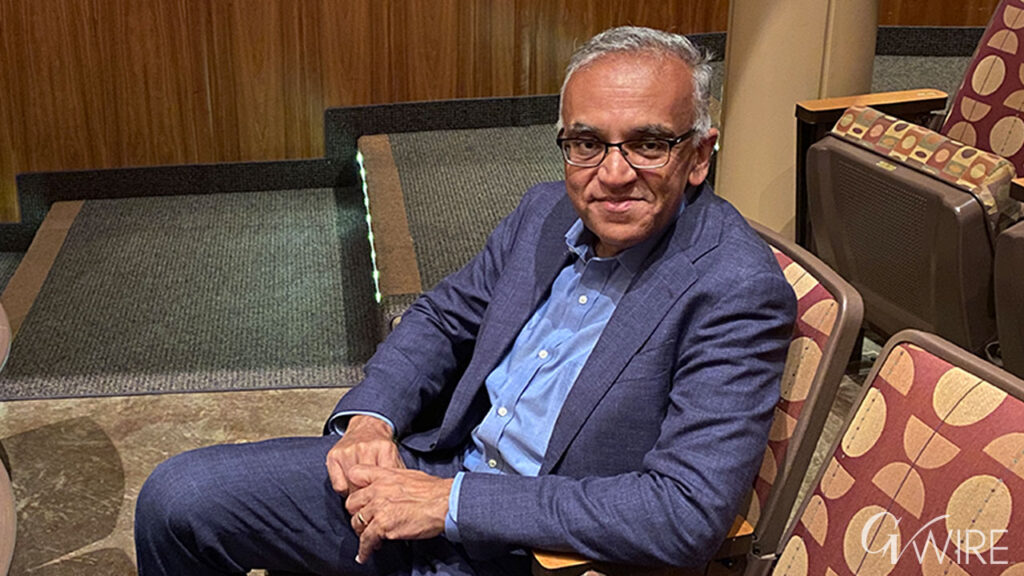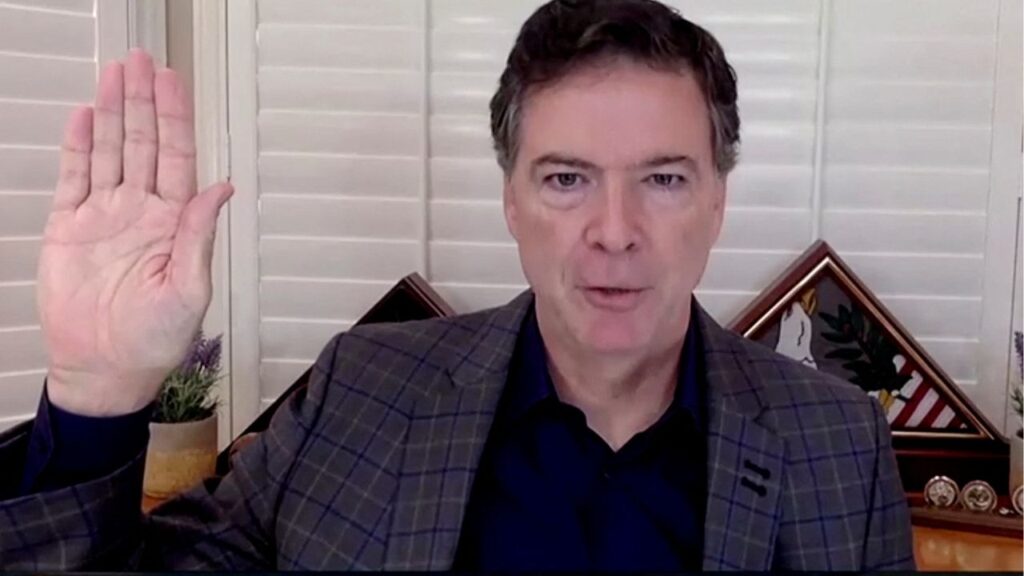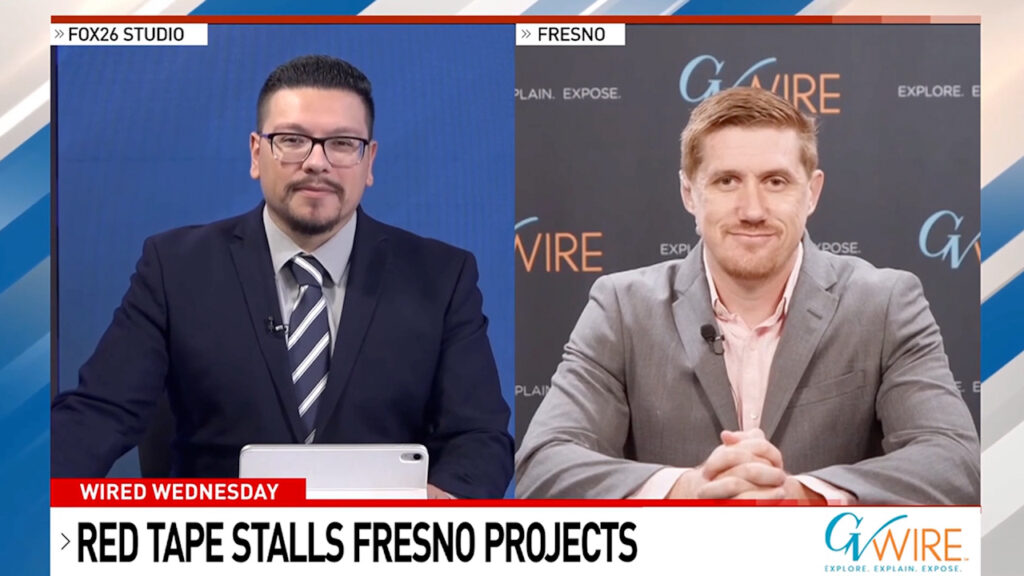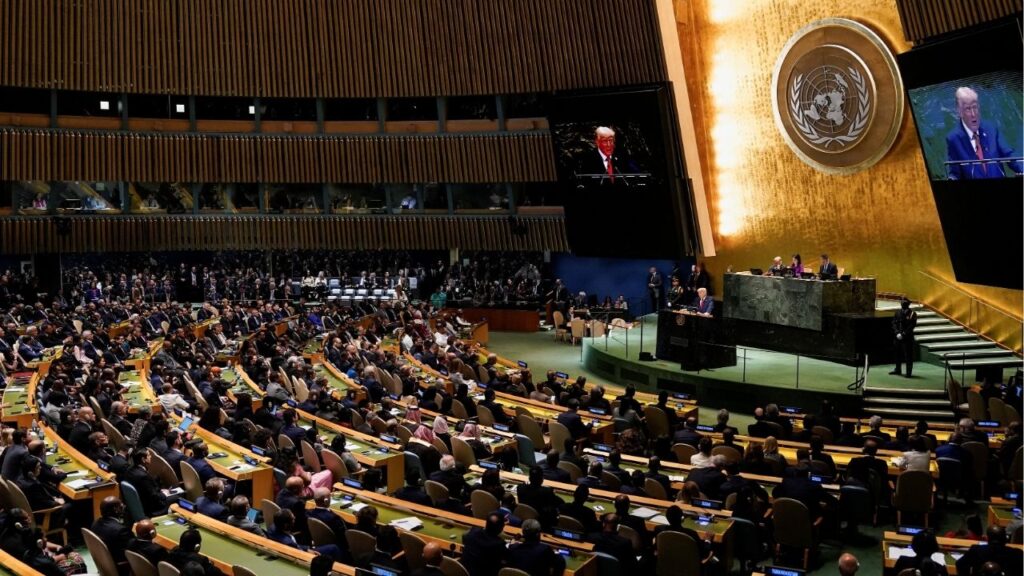California food banks grapple with funding cuts amid rising demand and inflation, forcing difficult choices for service providers. (CalMatters/Louis Bryant III)

- Food banks across California face potential cuts from both federal and state sources, impacting their ability to serve clients.
- The Sacramento Food Bank now serves 310,000 monthly clients, more than double its pre-pandemic numbers.
- Farmers who supply food banks may also be affected by the cancellation of federal food-purchasing grants.
Share
|
Getting your Trinity Audio player ready...
|
This story was originally published by CalMatters. Sign up for their newsletters.
Five years since the COVID-19 pandemic upended the economy and made millions experience hunger for the first time, demand at the Sacramento Food Bank and Family Services is still higher than ever.
The number of monthly clients has risen to 310,000, more than double the number of people the food bank served before the pandemic, spokesperson Kevin Buffalino said.
So it was a blow this month, he said, when the U.S. Department of Agriculture halted hundreds of millions of dollars in federal funds for food banks. Caught up in the freeze were 11 truckloads of food – 400,000 pounds – that the Sacramento food bank was expecting over the next few months.
A total of 330 truckloads bound for food banks across the state has been suspended, according to the California Association of Food Banks, with no indication of when or if they’ll be delivered. The biggest potential hit is to the Los Angeles Regional Food Bank, where 90 expected truckloads are in limbo.
The orders were promised during the Biden administration, which in December announced a bonus round of food orders on top of deliveries the USDA normally makes to food banks.
Related Story: Look Inside the New Madera County Foodbank, a Lifeline for Thousands
The freeze of the bonus orders came as food banks brace for other cuts — both from a new Trump administration intent on reducing federal spending and from California’s own state budget deficit after several flush budget years in the pandemic. In Washington, Congress is also considering cuts to the Supplemental Nutrition Assistance Program, which sends about $1 billion a month to low-income Californians to buy groceries.

But food programs are just one of many competing priorities the Democratic-dominated state Legislature will have to balance as California starts to get a picture of how federal cuts may affect the state and its $322 billion budget. California receives more than $314 billion in federal funds for food benefits, health coverage and other social services each year, while federal grants to nonprofits and private contracts total more than $81 billion.
Department of Finance spokesperson H.D. Palmer said it’s still too early to determine whether California can afford to make up the federal spending being cut.
Already, the food banks association is urging lawmakers not to reduce the state food assistance dollars, but they’ll be jockeying for attention amid a myriad of real and potential federal cuts in everything from higher education to rural road repairs, refugee resettlement services and the massive low-income health program Medicaid.
“These are Sophie’s choices,” said Assemblymember Gregg Hart, a Santa Barbara Democrat who chairs a budget subcommittee that’s evaluating potential federal funding shortfalls. “Every single thing that we could talk about has a federal funding connection that’s in jeopardy and the state just doesn’t have the money to backfill it.”
The Demand for Food Has Not Slowed
When a persistent foot condition forced Antoinette Turner to retire early last fall from her longtime job on a hospital graveyard shift, she looked for ways to save.
The 61-year-old was “rationing” her savings and accepting help from her son. For the first time in her life, she started going to the Sacramento food bank.
On Tuesday morning in a Sacramento church parking lot, she made her way down an assembly line of grocery pallets as volunteers offered canned soup, peanut butter, beans, rice and frozen turkey breasts. Hundreds of people were expected, including retirees, disabled veterans and immigrant families from Russia, Ukraine and Afghanistan who settled in the diverse Sacramento suburbs.
“It’d be sad,” if the organization had to cut back, Turner said. “It makes my life easier.”


A confluence of cuts could force the food bank to do just that, Buffalino said.
Earlier in March, the USDA terminated a Biden-era grant program that gave food banks and tribal governments money to purchase food from local farmers.
California food banks have gotten more than $80 million through the program since 2022, with some grants expected to last through mid-2026. They were expecting another $47 million in the program’s next round, before that was cut on March 7, said state Department of Social Services spokesperson Jason Montiel.
It was unclear why the grant was canceled and the orders halted. USDA officials did not respond to queries sent to the agency’s press email seeking comment. Under Trump, federal agencies have moved to halt or cut grants in a quest to purge waste and spending on programs that don’t meet the administration’s ideological tests.
California, too, is slated to reduce food banks’ funding. For several years when the state had a record surplus, it devoted millions of additional dollars to a state program called CalFood that allows food banks to purchase from local farmers or food producers such as tortillerias.
Those boosts gave food banks about $60 million a year through CalFood over the past three years; in the budget Gov. Gavin Newsom has proposed for the fiscal year that starts in July, that funding would revert to $8 million.
California Food Banks Depend on Aid
The federal and state food-purchasing funds have made up the majority of the $3.5 million the Sacramento food bank spends to buy food annually, Buffalino said.
Purchased food makes up 40% of the groceries the food bank gives away; the rest is delivered by the USDA or recovered from supermarkets that can no longer sell it.

With sharp reductions in both purchasing funds, Buffalino said the Sacramento food bank will either have to rely more heavily on private donations or cut back on how much it gives each recipient.
Though demand at the food bank receded slightly as jobs started to recover from the pandemic, clients quickly came back because of inflation, Buffalino said. Food prices last year were nearly 24% higher than in 2020.
“It’s been a steady increase (in clients) over the past five years,” he said.
Farmers, too, will be affected by the grants’ cancellation.
The federal food-purchasing funds have allowed small farmers to buy new equipment, invest in greenhouses and expand their footprints to serve bulk buyers, said Megan Kenney of the North Coast Growers Association in Humboldt County.
Kenney coordinates food orders between two regional food banks and about 40 farmers, all of whom plant fewer than 100 acres each. Over the winter, she and the farmers planned what they would plant based on food bank demand, expecting federal funds to back the purchases.
“They were encouraged to do these sorts of things,” Kenney said. “If they have to make a larger investment into seeds or labor without getting to see a return, they could really see that impact.”
This article was originally published on CalMatters and was republished under the Creative Commons Attribution-NonCommercial-NoDerivatives license.

















